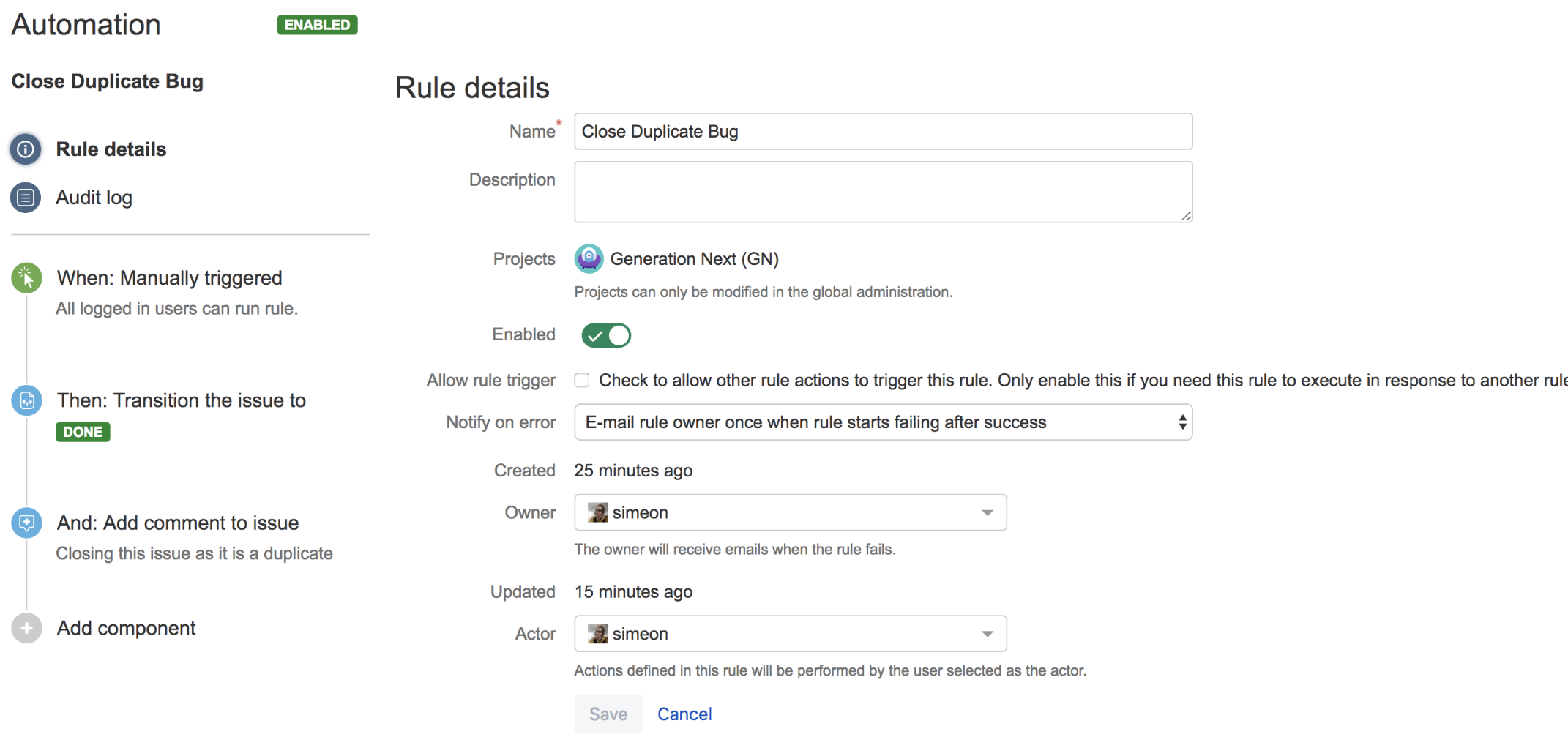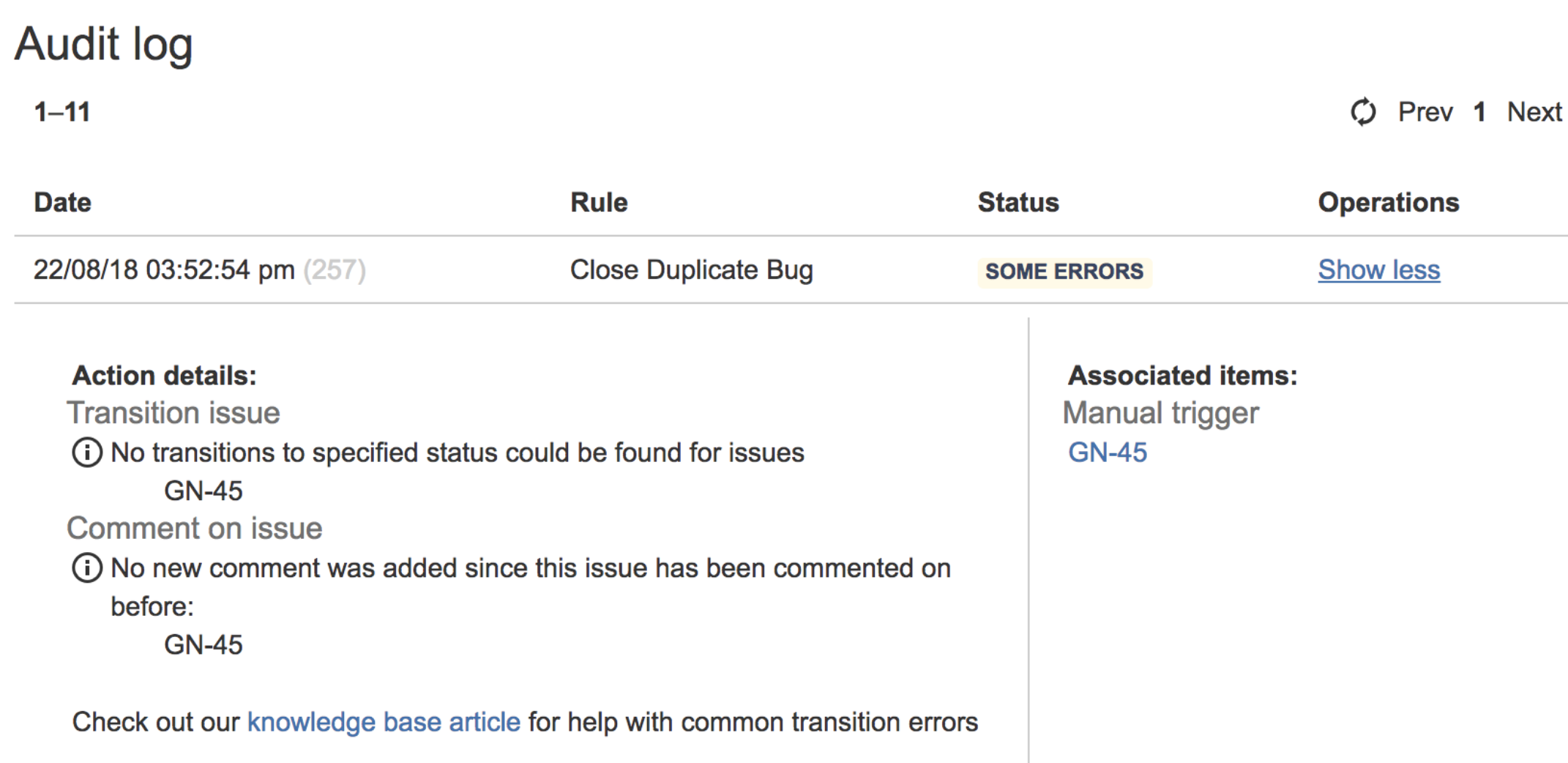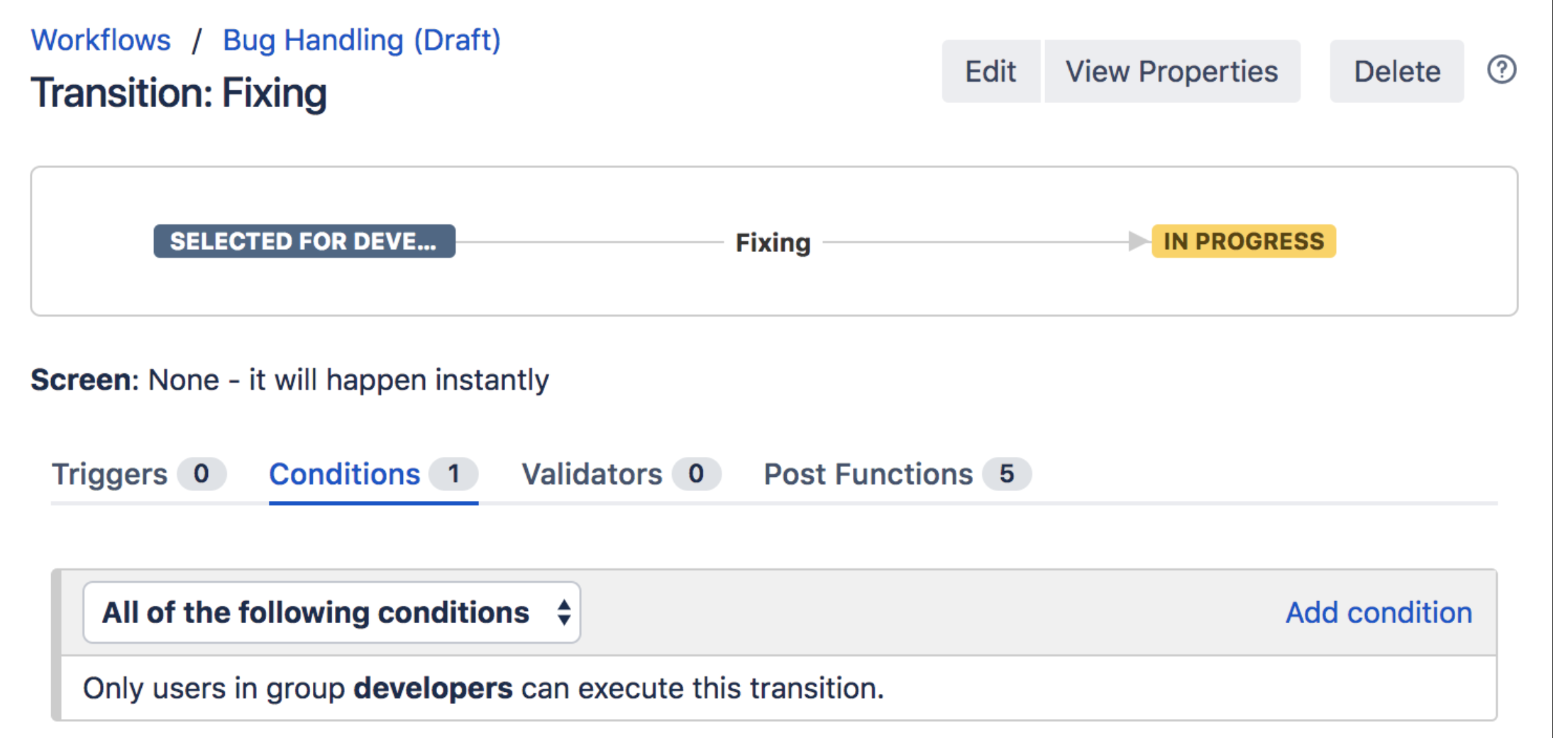Troubleshooting automation rules that are failing to transition an issue
Platform Notice: Data Center Only - This article only applies to Atlassian products on the Data Center platform.
Note that this KB was created for the Data Center version of the product. Data Center KBs for non-Data-Center-specific features may also work for Server versions of the product, however they have not been tested. Support for Server* products ended on February 15th 2024. If you are running a Server product, you can visit the Atlassian Server end of support announcement to review your migration options.
*Except Fisheye and Crucible
Summary
A common theme is confusion over the error "No transitions to specified status could be found for issues". While this error message seems to indicate that the status doesn't exist, it often means something different.
Solution
Transitions must follow Workflows
One of the common mistakes that people make is to create a rule to transition an issue in a way that doesn't follow the project's workflow. If you're not too familiar with Workflows then you can find a good explanation in the Jira documentation.
The example Workflow below is a custom workflow for investigating and handling bugs:

This workflow restricts what can be done with the Transition Issue action.
For example, take a rule with a manual trigger that comments when a bug is a duplicate - and then closes it by transitioning it to "Done":

From the workflow diagram, the example rule will not successfully execute on issues that are in the "Awaiting Triage" state, as issues can only go from there to "Under Investigation".
A rule run on a ticket in this state will result in an error status:

However, this rule runs on issues in the "Under Investigation" and "In Progress" statuses as the workflow allow transition from these statuses to "Done".
Rule actors need the correct permissions
Another common mistake is not taking into account the permissions of the rule actor. The rule actor is set in the rule details section of a rule and is the user that the rule runs under. Your rule actor may be in a different set of groups than yourself and not have the right permissions for transitioning your issues. Using the example in the previous section, looking at the details of the transition from "Selected for Development" to "In Progress" you can see that there is a condition attached to making this transition:

Developers are the only users who fix bugs, so this condition ensures that they are the only users able to make this transition:

Here is an example rule using webhooks that transitions an issue to "In Progress" when the developer creates a branch on GitHub:

In its current form, this rule will fail as the rule actor is not part of the developers group:

Changing the rule actor to one in the developers group and the rule runs successfully.
Was this helpful?